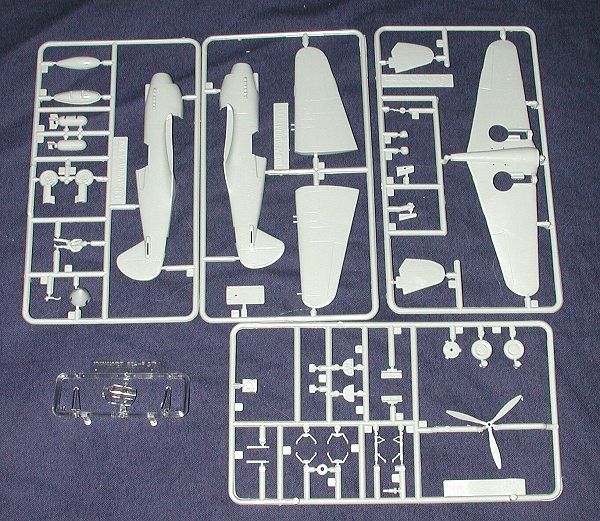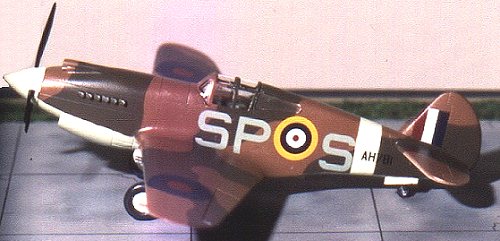
|
KIT: |
Academy 1/72 P-40B Tomahawk |
|
KIT # |
1655 |
|
PRICE: |
#4.50 |
|
DECALS: |
One aircraft |
|
REVIEWER: |
|
|
NOTES: |

|
HISTORY |
Basically a P-36 with an Allison liquid-cooled engine, the early P-40s were not that great an aircraft, especially when compared to the German Bf-109 and British Spitfire of the time (1941). However, they were among the best that the US had and while decent performers at low level, their lack of supercharging or turbocharging made them worthless at altitudes above 15,000 feet, where much of the European air war was being fought.
Despite this lack of altitude performance, they were credible fighters as long as they weren't required to do any dog fighting. Hit and run tactics were the ones that played to the strengths of the early P-40s and they were pretty well suited for ground attack as well. Naturally, their fame was made with the Flying Tigers who operated 100 of these aircraft before getting a few newer P-40Es and finally being incorporated into the 23rd FG in mid 1942.
|
THE KIT |

This isn't a brand new kit. Both boxings that I have are dated 1987 in the instructions. I've already mentioned how Academy basically takes kits already out there and modifies them to come close to current standards. This particular kit undoubtedly started out as a Frog mold, though it has been improved with engraved panel lines and a few additional details, if the sprues were compared to the Frog kit, there would be an amazing likeness!
Not to say that it is a bad kit as it isn't. It is just a bit barren when
compared to the latest and greatest from Japan and Europe. The cockpit is
basically floor, seat and stick with a pilot to cover up the lack of detail. You
do get two options, those
 being bomb or drop tank and the option to do a wheels
up kit. This last option was fine for Frog, which always included a stand, but
not very practical for Academy, which doesn't. Probably the biggest problem with
the kit is lack of wing dihedral, but careful construction can alleviate that
situation with a bit of trimming.
being bomb or drop tank and the option to do a wheels
up kit. This last option was fine for Frog, which always included a stand, but
not very practical for Academy, which doesn't. Probably the biggest problem with
the kit is lack of wing dihedral, but careful construction can alleviate that
situation with a bit of trimming.
Instructions are pretty good with the usual construction drawings. There is no color information given other than to refer to the box top model. A four view is given showing the camo scheme and decal placement. Interestingly, though the instructions are the same in both kit boxings, the better decals are in the one with the photo of the completed model, having been printed by Scalemaster. The Academy house decals are not bad, but the Scalemaster ones are better. Both are for the same plane, #68 of the Flying Tigers.
Fortunately, there are aftermarket decals available for this and the Frog kit, so you are not stuck doing a Flying Tiger. Just to show you that a rather nice model can be made, here is a picture of one I did when the kit first came out. I used IPMS Canada decals for this one.

|
CONCLUSIONS |
While it probably won't win any awards straight from the box, it is a very basic and simple kit to build. This is one that I would recommend to builders of all skill levels.
If you would like your product reviewed fairly and quickly by a site that has well over 150,000 visitors a month, please contact me or see other details in the Note to Contributors.